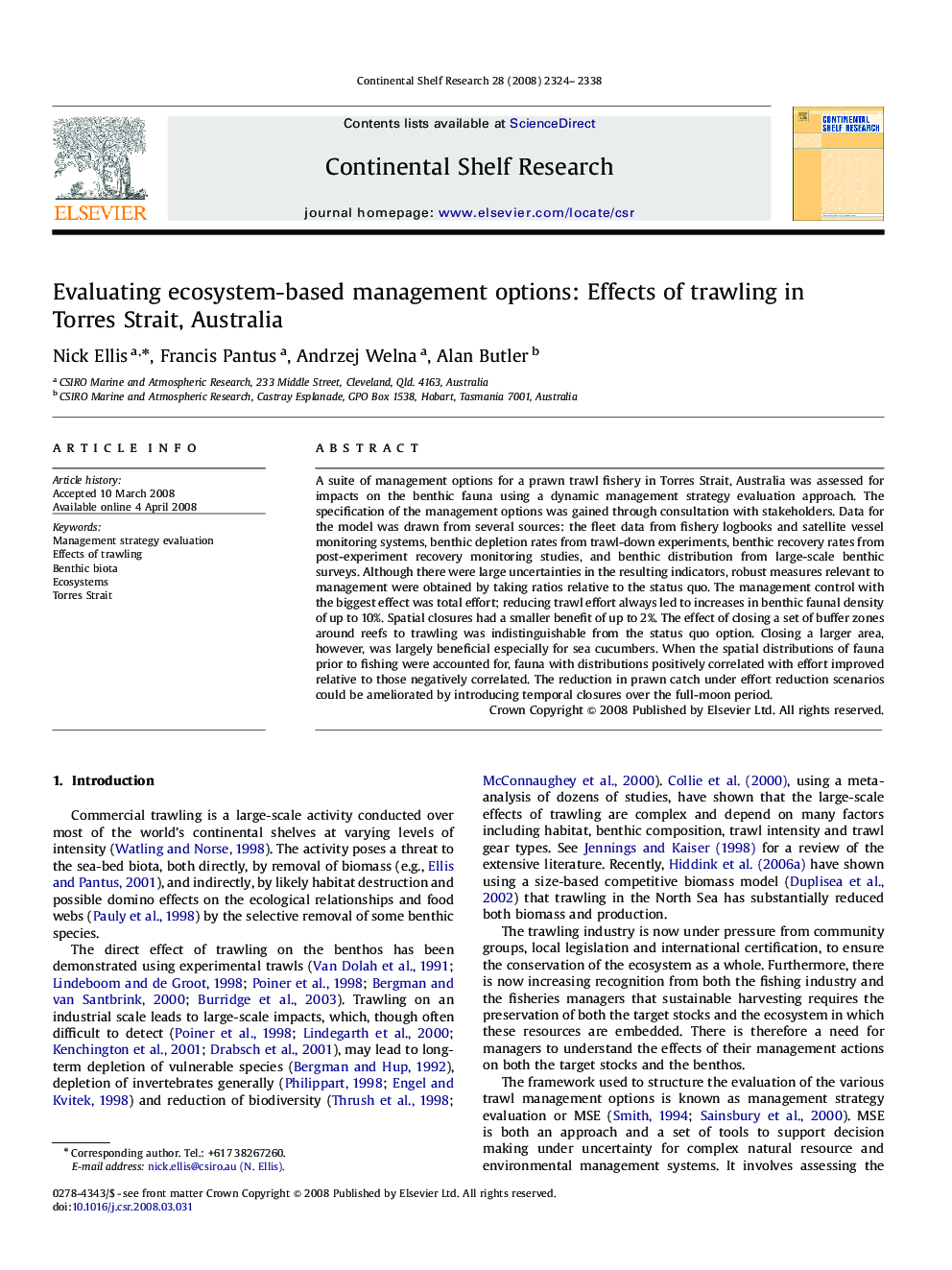| Article ID | Journal | Published Year | Pages | File Type |
|---|---|---|---|---|
| 4533339 | Continental Shelf Research | 2008 | 15 Pages |
A suite of management options for a prawn trawl fishery in Torres Strait, Australia was assessed for impacts on the benthic fauna using a dynamic management strategy evaluation approach. The specification of the management options was gained through consultation with stakeholders. Data for the model was drawn from several sources: the fleet data from fishery logbooks and satellite vessel monitoring systems, benthic depletion rates from trawl-down experiments, benthic recovery rates from post-experiment recovery monitoring studies, and benthic distribution from large-scale benthic surveys. Although there were large uncertainties in the resulting indicators, robust measures relevant to management were obtained by taking ratios relative to the status quo. The management control with the biggest effect was total effort; reducing trawl effort always led to increases in benthic faunal density of up to 10%. Spatial closures had a smaller benefit of up to 2%. The effect of closing a set of buffer zones around reefs to trawling was indistinguishable from the status quo option. Closing a larger area, however, was largely beneficial especially for sea cucumbers. When the spatial distributions of fauna prior to fishing were accounted for, fauna with distributions positively correlated with effort improved relative to those negatively correlated. The reduction in prawn catch under effort reduction scenarios could be ameliorated by introducing temporal closures over the full-moon period.
